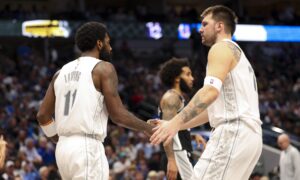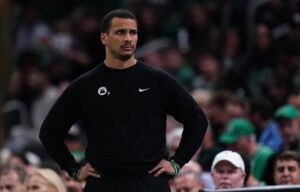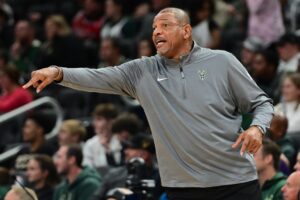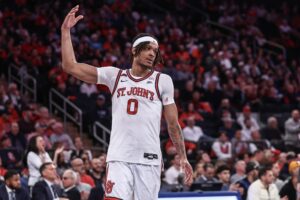The COVID-19 pandemic halted the sports world back in March. This included the cancellation of one of the greatest sports events of the year, March Madness. Now, sports leagues across the country are trying to figure out how to resume play, including the NCAA. Many conferences have already begun postponing fall sports, and football has not been immune. While a bubble might not work for some sports, the NBA and MLS are showing that it is possible for it to be effective for a resumption of play. College basketball could use that model to ensure that every team can get some non-conference games in.
The College Basketball Non-Conference Bubble Idea
Input from across the college basketball world has begun to pour in regarding whether games should be played this season. The NCAA keeps delaying deadlines on a decision for a return to certain activities. Even coaches are on both sides of the aisle of the debate. Iona head coach Rick Pitino has chimed in numerous times about delaying the season to January.
Suggestion to the NCAA, push the start of the season back to January and only play league games. Buy some more time for a vaccine and to get things under control. Although I can’t wait to be back on the sidelines, the health of my players and staff is what’s really important.
— Rick Pitino (@RealPitino) July 1, 2020
Meanwhile, Seton Hall’s Kevin Willard expressed the opposite view in a recent interview with the New York Post. In fact, he even used the bubble idea.
“I do not agree with pushing it back because I think we’re missing a window. Every school has said that after Thanksgiving there will be no one on campus, so why we would not take advantage of having no one on campus? It’s almost like being in a bubble…it’s probably the safest time to play,” Willard said.
It is important to note that Willard still believed in a conference-only slate. However, many have pointed out that playing conference-only games still makes some schools travel a long way (Maryland at Nebraska, anyone?). However, a regional non-conference bubble could ensure some games are played outside of leagues without putting health at risk.
How it Works
To make a college basketball non-conference bubble work, it would need to be treated like an early-season tournament. Think of having a Maui Invitational, but regionally. As mentioned, the bubbles the NBA and MLS have been using can be guides on how to go about keeping social distance and testing. To cut down on travel, especially by plane, keep these groupings as regional as possible.
Here is a basic example. Create a ten team bubble in Boston. The participants can be Boston College, Boston University, Northeastern, Harvard, Massachusetts, Massachusetts-Lowell, Holy Cross, Vermont, New Hampshire, and Maine. Each of these teams can bus into the city and arrive in time to quarantine and test on site. While some of these teams overlap in conferences, it is still an opportunity to fill the schedule without adding in air travel. Each team plays each other once, providing nine “safe” games if you will. If these were treated like early-season tournaments, sponsors could even step in to help generate revenue for the event.
College Basketball Non-Conference Bubble Challenges
Testing
The biggest challenge to this idea is testing. Testing every day has worked for the professional leagues, but they have the means to afford it. Many schools will struggle to afford testing their athletes like that, and athletic budgets are already taking hits just to stay afloat. The biggest outcry from everyone involved has been the importance of the health and safety of the student-athletes, coaches, and other staff members that help the program run. Without ensuring that is taken care of, this idea would stumble out of the gate.
Amateurism
The NCAA’s battle with paying players comes into focus here as well. Unlike professional athletes, there is essentially all risk and no reward for playing these games. The student-athletes are not getting any additional benefits to putting their health at risk. While players have a desire to get back on the court, the NCAA will not be giving them a paycheck for their efforts like the NBA does. Playing these games is solely about playing as close to a full season as possible.
Academics
If there are schools that choose to have students back on campus, will pulling the players away from their classes for a two-to-four month stretch be allowed? The biggest debate about returning to schools is the importance for in-person rather than online learning. While most programs have staff members that assist with tutoring and other academic components, it would be a hard argument to make that a player needs to be away from their classes for a long period of time. However, if a school is committed to online learning, this makes staying on top of classes easier.
Scheduling
Crunch time for getting a schedule set is approaching. Obviously, there will be more wiggle room than normal this year in adjusting schedules given the circumstances. However, even trying to plan something a little more complex like a bubble environment could be too little, too late. Still, there are less non-conference schedules out now than in a normal year, as many programs are playing a wait-and-see game with the virus. However, the regional nature of this bubble should make it easier to make schedule adjustments.
Verdict
This is an idea that the NCAA should at least consider. It requires coordination between the NCAA, the conferences, and the schools. It is also an idea that needs to be fully developed and mapped out to make sure there are no loose ends, especially since the health and safety of all involved should be at the forefront. However, it could work, and it would be a win-win for everyone if implemented correctly. Teams get to play non-conference games while knowing that all proper safety protocols are being used within the bubble. Venues that may not have seen an event in months get to put on an event. Fans get to see some live college basketball for the first time in months, especially with the empty feeling of not having the NCAA Tournament this past year.
Main Photo






